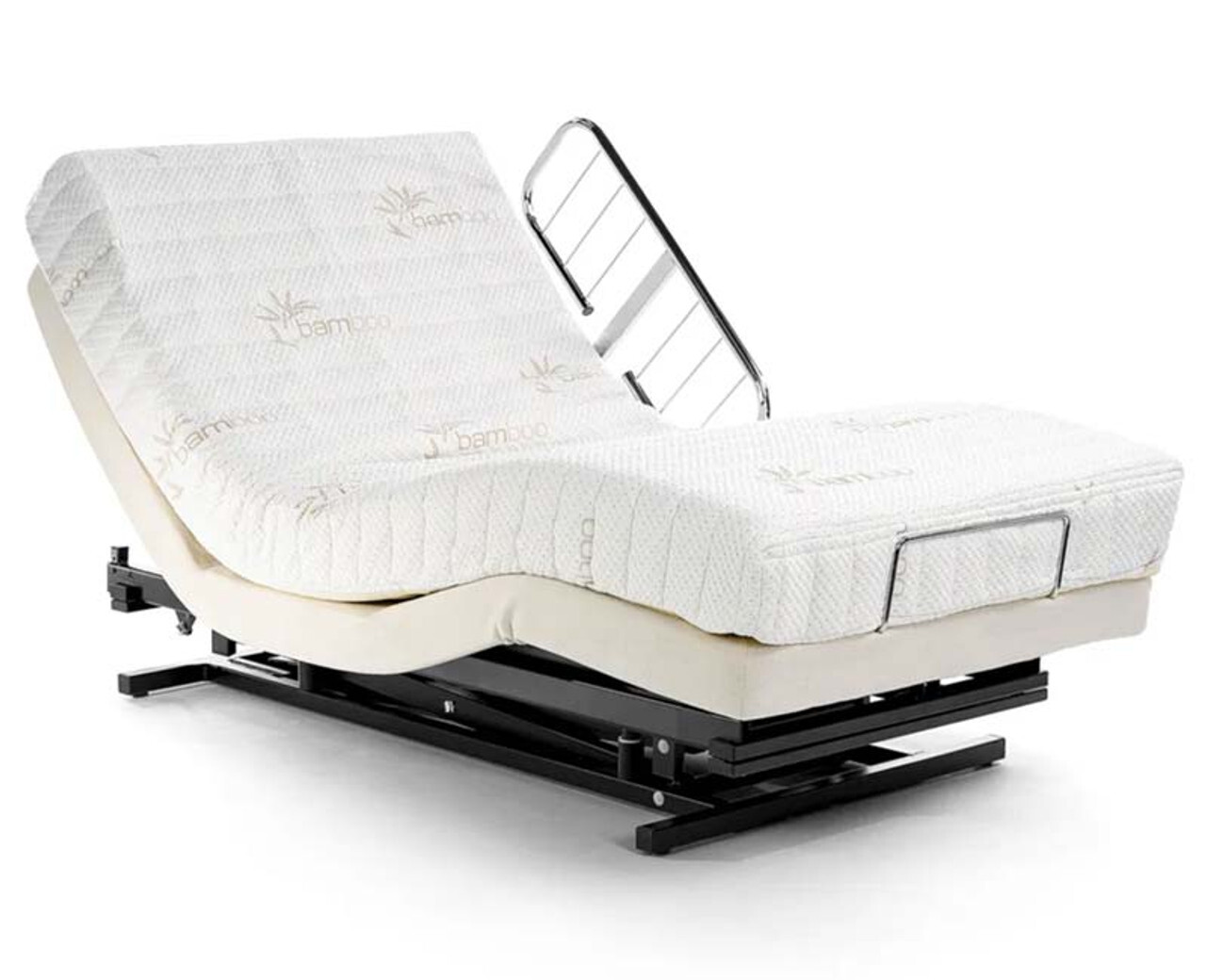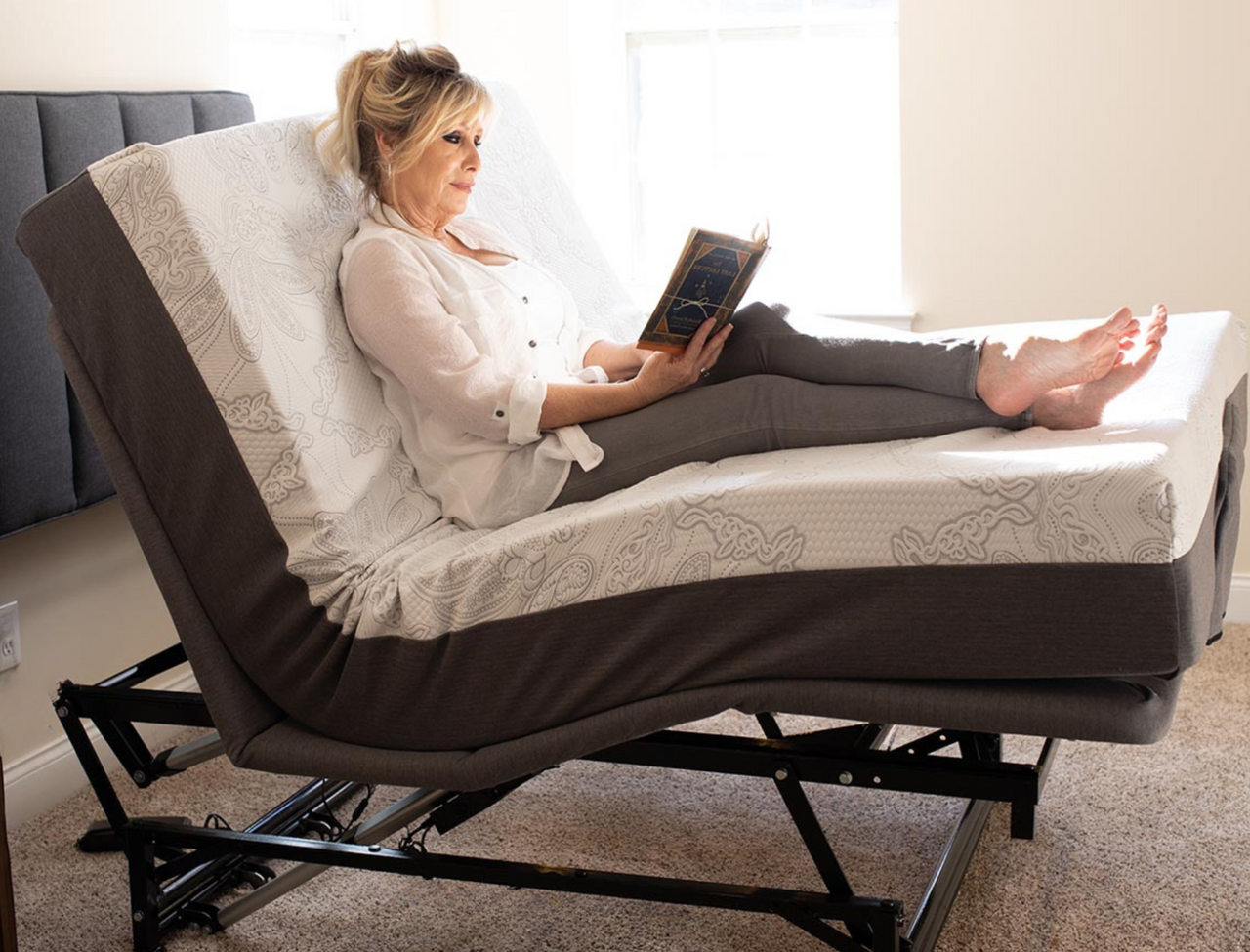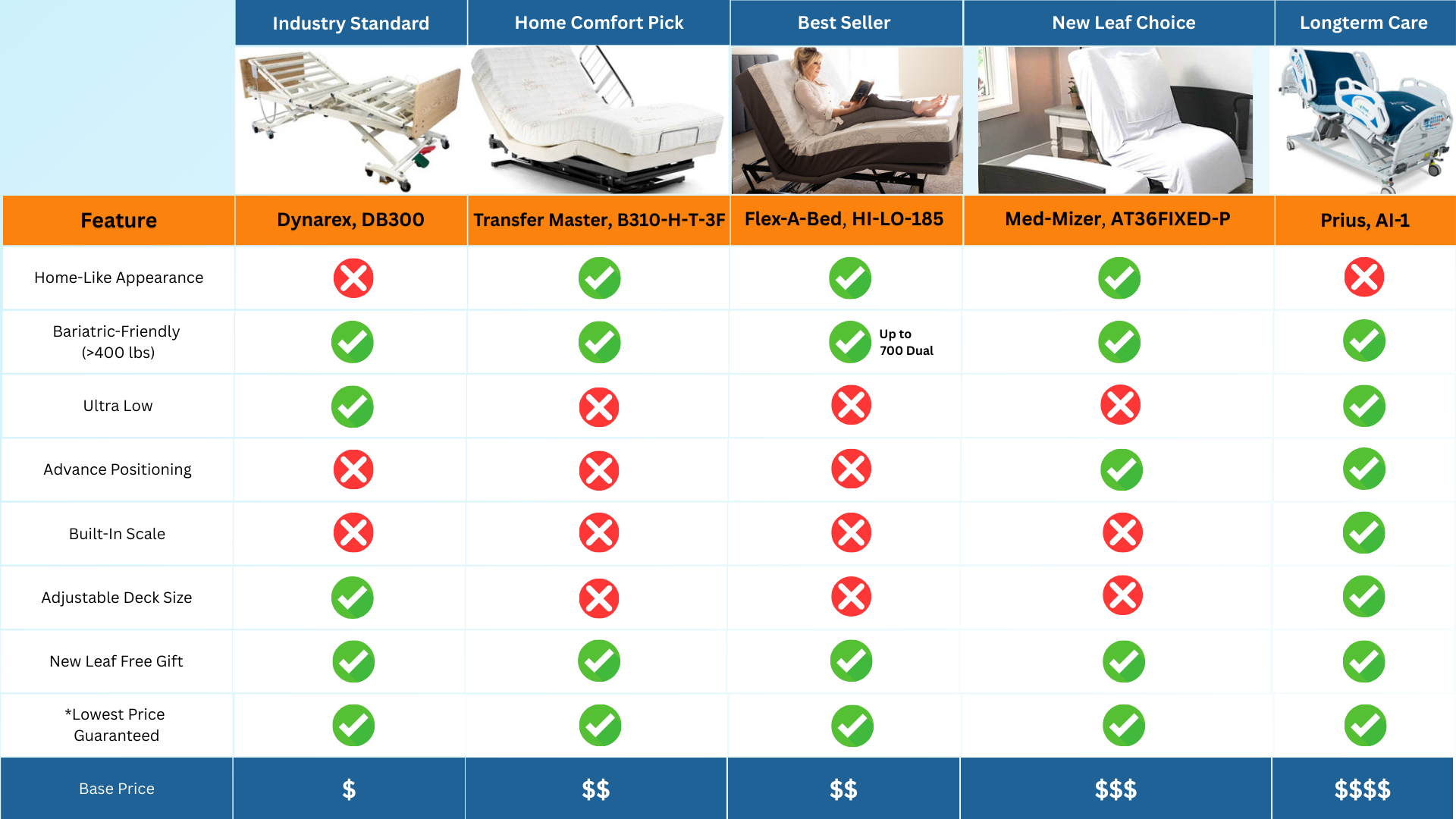FREE SHIPPING ON ORDERS OVER $75
Safety Features of Home Hospital Beds: Prioritizing Security and Stability

Safety is a top priority when selecting a hospital bed for home care, particularly for individuals with mobility limitations, chronic conditions, or cognitive impairments. Home hospital beds come equipped with various safety features that enhance security, support, and comfort for both patients and caregivers. These features are essential in preventing falls, providing emergency access, and creating a stable environment that minimizes risks in everyday care routines.

For anyone requiring medical support at home, understanding the available safety features is crucial to making an informed choice. Here, we’ll explore key safety mechanisms in hospital beds, including side rails, bed locks, adjustable height, and stability features, as well as tips for ensuring a safe and supportive home care setup.
Importance of Safety Features
Preventing Falls and Accidents
 One of the primary goals of a safety-focused hospital bed is to reduce the risk of falls and accidents, which are common concerns for individuals with limited mobility. Falls can lead to serious injuries and setbacks in recovery, making preventative features a crucial part of hospital bed design. Safety features like side rails, bed locks, and adjustable height settings are designed to create a controlled environment, where patients can rest securely and caregivers can provide assistance without worry.
One of the primary goals of a safety-focused hospital bed is to reduce the risk of falls and accidents, which are common concerns for individuals with limited mobility. Falls can lead to serious injuries and setbacks in recovery, making preventative features a crucial part of hospital bed design. Safety features like side rails, bed locks, and adjustable height settings are designed to create a controlled environment, where patients can rest securely and caregivers can provide assistance without worry.
 In addition to preventing falls, safety features also offer patients a sense of security, which can reduce anxiety, encourage better rest, and contribute to overall well-being. Knowing that safety mechanisms are in place can enhance peace of mind for both the patient and their loved ones.
In addition to preventing falls, safety features also offer patients a sense of security, which can reduce anxiety, encourage better rest, and contribute to overall well-being. Knowing that safety mechanisms are in place can enhance peace of mind for both the patient and their loved ones.
Facilitating Safe Transfers and Movement
 A safe hospital bed allows patients to get in and out of bed with minimal risk. For individuals with mobility challenges, beds that adjust to safe transfer heights reduce the likelihood of injury and make transfers easier and safer. Caregivers, too, benefit from these features, as they can assist with transfers without the physical strain associated with lifting or bending.
A safe hospital bed allows patients to get in and out of bed with minimal risk. For individuals with mobility challenges, beds that adjust to safe transfer heights reduce the likelihood of injury and make transfers easier and safer. Caregivers, too, benefit from these features, as they can assist with transfers without the physical strain associated with lifting or bending.
Features like adjustable height and bed locks make daily movements smoother, allowing patients to reposition themselves safely and caregivers to assist without compromising stability. This ensures that caregiving tasks are performed more efficiently, supporting both patient safety and caregiver health.
Side Rails and Bed Locks
Side Rails for Fall Prevention
Side rails are one of the most vital safety features on a hospital bed. Designed to prevent falls, side rails create a boundary that protects patients from accidentally rolling out of bed. This feature is especially important for individuals who may experience confusion, restlessness, or involuntary movements. Side rails come in various styles, from half-length rails that provide partial coverage to full-length rails that offer comprehensive protection.
In addition to preventing falls, some side rails are padded for comfort, allowing patients to rest against them without discomfort. Many side rails are adjustable, enabling caregivers to raise or lower them as needed for easy access and safety.
Bed Locks for Added Stability
Bed locks ensure that the hospital bed remains stable, particularly important for beds with wheels. Lockable wheels allow the bed to be moved when needed—such as during cleaning or repositioning—while providing a secure, immovable foundation when the patient is resting. This stability is essential for safe transfers, as an unlocked bed can shift, increasing the risk of injury.
Most hospital beds come with easy-to-use locking mechanisms that caregivers can engage to keep the bed securely in place. For patients with significant mobility challenges or those who may move frequently, bed locks are a necessary safety feature that provides extra stability and reduces risks.
Adjustable Height and Stability
The Importance of Adjustable Height
Hospital beds with adjustable height capabilities allow for safer transfers by positioning the bed at a level that is easy for patients to access. This feature is beneficial for patients who need assistance with transfers, as it allows caregivers to adjust the bed to a height that minimizes the effort needed to move the patient in and out of bed.
Adjustable height also supports various care activities, from dressing changes to medical procedures, enabling caregivers to comfortably reach the patient without awkward bending or lifting. By customizing the height for different needs, this feature enhances safety for both patients and caregivers.
Ensuring Bed Stability
Bed stability is crucial, especially for individuals who may lean against the bed during movements or those who require support for sitting up. Many hospital beds are designed with reinforced frames that prevent tipping or wobbling, ensuring a solid foundation for the patient. Some beds come with low-height settings, which help prevent injuries by reducing the distance a patient might fall if they accidentally leave the bed.
Stability is not only important for safety but also adds to the patient’s confidence, allowing them to feel secure as they adjust positions, move, or sit up independently. For patients with significant physical limitations, a stable bed can make a substantial difference in daily comfort and security.
Ensuring Safety in Home Care
Conducting Regular Maintenance and Checks
To ensure that safety features remain effective, regular maintenance and checks are essential. This includes inspecting side rails for any signs of wear, checking the bed locks for secure functionality, and testing the adjustable height mechanism to ensure smooth operation. If a bed has electronic controls, caregivers should ensure that these components are functional and responsive.

Routine maintenance helps prevent malfunctions, reducing risks and ensuring that the bed remains a safe and supportive space. For long-term care needs, investing in a bed with a solid warranty can also provide additional protection, as it often covers repairs for essential safety features.
Setting Up a Safe Environment Around the Bed
Safety isn’t limited to the bed itself but also includes the surrounding environment. Placing non-slip mats next to the bed can reduce the risk of slipping when getting in and out of bed. Ensuring that the area around the bed is clear of obstacles, cords, or loose objects also minimizes hazards, creating a safer space for both the patient and caregivers.
Proper lighting is another important aspect of safety. Installing a nightlight or bed-adjacent lighting can help patients navigate their surroundings during nighttime or in low-light conditions, reducing the risk of trips or falls when moving around the bed.
Final Thoughts
Safety features in a hospital bed are critical to creating a secure, supportive, and stress-free home care environment. From side rails that prevent falls to bed locks and adjustable heights that enhance stability, each feature plays an important role in safeguarding both patients and caregivers. These features provide invaluable peace of mind, ensuring that individuals can rest, recover, and receive care in a controlled and secure environment.
Selecting a hospital bed with robust safety mechanisms is essential for anyone requiring medical support at home. By choosing a bed with the right safety features and maintaining a safe surrounding environment, caregivers can create a space that fosters health, confidence, and comfort.
